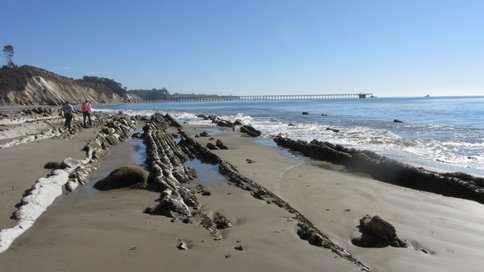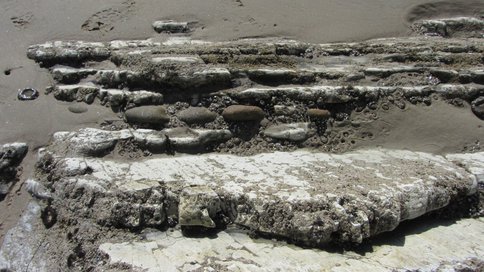2013 Annual Science Report
 University of Wisconsin
Reporting | SEP 2012 – AUG 2013
University of Wisconsin
Reporting | SEP 2012 – AUG 2013
Project 2E: Carbonate-Associated Sulfate (CAS) as a Tracer of Ancient Microbial Ecosystems
Project Summary
The iron carbonate mineral, siderite, in sedimentary rocks is usually formed by microbial processes. The presence of small amounts of metals other than iron, and the stable isotope compositions of carbon and oxygen, give information on the details of the microbial ecosystem that produced it and its environment of formation. In particular, if associated with iron sulfide (pyrite), it indicates the former presence of at least two different microbial metabolic processes. In addition, carbonate minerals can contain trace amounts of the chemical compound sulfate, in which the isotopic compositions of sulfur and oxygen reveal further details of the microbial process if that sulfate can be released unaltered from the minerals. Our first challenge in this project has been to develop a method for releasing the original, preserved sulfate without contaminating it with somewhat similar material produced from oxidation of pyrite as an artifact of the preparation method.
Project Progress
This project offers two major challenges, the first analytical and the second, interpretation of data. Consequently, we have started by trying to establish an analytical protocol so that in the process of extracting trace sulfate from carbonate we minimize the amount of artifact sulfate introduced by oxidation of pyrite in the same sample. We have made good progress in this part of the task. We prepared a large test material sample by precipitating calcium carbonate in a solution containing sodium sulfate, which was then homogenized. We found that we could extract the sulfate as expected. We then made extractions from the same test material doped with various amounts of pyrite. Previous work had indicated that introduction of even small amounts of ferric iron in solution during the processing with hydrochloric acid could oxidize pyrite, releasing additional sulfate. We found that processing samples under and anoxic atmosphere prevented another major, potential source of additional sulfate from oxidation of pyrite with molecular oxygen.
Before applying the new method to really ancient samples, we are going to test it on relatively young (Miocene age) Monterey formation material. We undertook fieldwork in the Santa Barbara area, helped very considerably by Prof Jim Boles, Emeritus, Professor of Geology in the Department of Earth Science of the University of California, Santa Barbara.
We collected a sequence of pyrite-containing samples; both carbonate concretions and phosphate rich sediments. Our objective is to not only test the new extraction method but also to gain detailed information on the history of diagenesis and evolution of the microbial ecosystems during the burial of this sedimentary sequence.
These samples are being prepared for petrographic examination and subsequent analysis now.
Publications
- Theiling, B.P. & Coleman, M. (2014). A method for extraction of carbonate associated sulfate for isotopic analysis improved by excluding additional artifact material. Chemical Geology.
-
PROJECT INVESTIGATORS:
-
PROJECT MEMBERS:
Max Coleman
Project Investigator
Bethany Theiling
Co-Investigator
James Boles
Collaborator
-
RELATED OBJECTIVES:
Objective 5.2
Co-evolution of microbial communities
Objective 6.1
Effects of environmental changes on microbial ecosystems
Objective 7.1
Biosignatures to be sought in Solar System materials

